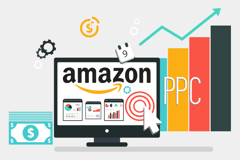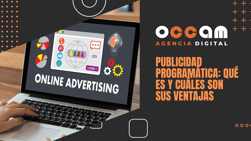Index Content
Despite the fact that 45% of small businesses use paid ads, pay per click is still a concept that escapes many of us.
Good ad design and optimisation are factors that search engines use to rank ads above others.
PPC is an advertising model that marketers should consider in their toolkit, or at least have a basic understanding of the concept. Before we begin, it is important to consider what PPC is and what it consists of.
what is the PPC campaign model?
PPC or pay per click is a digital advertising model in which the advertiser pays an amount each time a user clicks on one of their ads to visit their website. The idea of a pay per click campaign is to "buy visits" to a given site.
On Google and other platforms, the methodology is the same: every time your ad is clicked on, the search engine is paid a small fee.
When done right, PPC can help you gain quality leads and if you can create a seamless customer journey it could mean a huge ROI for your PPC efforts.
Pay-per-click advertising is most common on search engine results pages (SERPs) like Google or Bing, but it is also used on social channels like Amazon Advertising or Facebook Ads. If you're wondering where pay-per-click ads are seen, the answer is before or to the right of the results in an organic search.
When a PPC campaign is well designed and running smoothly, that price will be the least of it, because the visit is worth more to your business than what you are paying per click.
Although PPC is a very common option, it is not the only possible payment model for online campaigns, so it is important to distinguish it from others:
- PPM (pay per thousand): the advertiser pays a fixed amount per thousand impressions, that is, each time the ad is shown a thousand times to users. It must be taken into account that with this model we do not know how much we are going to pay for each visit, as it is possible that those thousand impressions generate many clicks, few or none.
- PPA (pay per acquisition): the advertiser pays for each time the user performs a specific action, for example, downloading an application. Therefore, the link between cost and objectives is even more evident than in the case of PPC.
what are the advantages?
why should you go for PPC campaigns? Here are a few reasons why you may find it interesting to implement PPC campaigns:
- You only pay for the visits you receive. Contrary to other types of online campaigns, where you pay for the number of impressions, for example, PPC campaigns help you to pay only for the number of clicks you receive.
- You have a lot of information about the performance of the ad. Pay per click platforms give the advertiser complete information about what is happening with the ad, including the number of impressions, clicks, CTR and conversions.
- Good optimisation possibilities: With all this data, it is very easy to know whether an ad is working or not and to correct the course in real time. In fact, the most recommended strategy is to create several variants of each ad and compare them against each other to see which ones work best. In this way, we can make our advertising perform better and better.
- The ads only reach the right audience. Thanks to the multiple targeting options, not a single click is wasted, as only the users we are most interested in will see the ad. In turn, this improves the results of the ad, as a user who is part of the target audience is more likely to click. And as we have seen, the higher the click-through rate, the lower the cost of the ad.
- You can control your budget precisely. Impression ads are usually fixed price. Whether you are interested or not, you have to stick to a fixed cost. By paying per click, you decide the budget you will spend on the PPC campaign. This means that they can be adapted to advertisers of all sizes and you can control in advance how much you will spend on each campaign.
- You can decide where and at what times your ad will be shown. Within the pay per click model, you can show your ads on many different platforms and locations and select the ones you are most interested in. They also allow you to decide at what times to show your ad. You may not be interested in the type of users that browse at certain times. PPC campaigns allow you to narrow down the time of day that you like to promote your site.
- You will get more positioning and visibility. PPC campaigns will allow you to place your website in advantageous positions in search engines. You know that in general search engine users do not usually spend many pages of results so the earlier you appear the more chances you have to reach your potential customers.
- PPC campaigns allow a great variety as you can show different messages with the same keywords. These messages are interspersed and shown randomly to users. As they are different ads, even if they are about the same thing, they will help you get better results and positioning compared to other PPC ads.
Paid advertising will help you reach the top spot in a competitive market and be seen by potential customers who might not know you exist. It can help you promote your next marketing initiative, improve brand awareness or rank for difficult keyword terms. In other words, PPC is your shortcut to the top within your niche. If done responsibly, PPC can be an integral part of your inbound marketing strategy.
which is more profitable for your business: organic or paid search? If you want to know more, click here.





